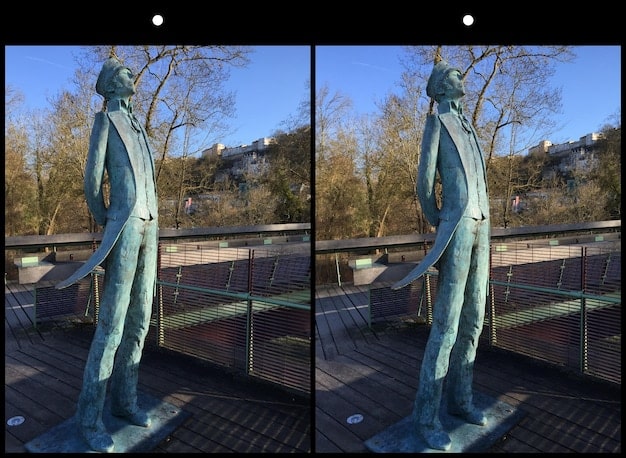Is Ray Tracing Worth It? 2025 PC Gaming Performance Analysis

In 2025, whether ray tracing is worth it for PC gamers hinges on balancing visual fidelity enhancements with performance costs, influenced by advancements in GPU technology and game optimization.
Is ray tracing worth it? A 2025 performance analysis for PC gamers reveals a complex picture, where stunning visuals meet the reality of hardware demands. Let’s explore the future of gaming graphics.
Ray Tracing: A Primer for 2025
Ray tracing has been a buzzword in the gaming community for years, promising realistic lighting, reflections, and shadows. By 2025, the technology has matured, but its impact on performance remains a key consideration. Understanding the basics of ray tracing is crucial before diving into its value proposition.
What is Ray Tracing?
Ray tracing is a rendering technique that simulates the way light behaves in the real world. Instead of using traditional rasterization methods, ray tracing traces the path of light rays from the camera to the scene, calculating how they interact with objects to create more accurate and lifelike visuals.
How Has Ray Tracing Evolved?
Early implementations of ray tracing were extremely demanding, requiring top-of-the-line hardware. Over the years, advancements in GPU technology, such as dedicated ray tracing cores and optimized algorithms, have significantly improved performance. In 2025, ray tracing is more accessible, but it still impacts frame rates.
- Improved GPU Architectures: Modern GPUs feature dedicated hardware for ray tracing, reducing the performance overhead.
- Optimized Game Engines: Game developers are becoming more adept at implementing ray tracing efficiently.
- Advancements in Upscaling Technologies: Technologies like DLSS and FSR help mitigate the performance hit by rendering at a lower resolution and then upscaling the image.

In conclusion, ray tracing provides a substantial visual upgrade, but understanding its technological underpinnings and evolution is essential for assessing its impact on gaming performance in 2025.
Performance Impact: Ray Tracing in 2025
The most significant concern for PC gamers is the performance impact of ray tracing. Activating ray tracing can dramatically reduce frame rates, potentially making games unplayable, especially on lower-end hardware. However, the situation in 2025 is more nuanced than in previous years.
Frame Rate Considerations
Activating ray tracing can reduce frame rates by as much as 30-50% in some games. This can be a major issue for gamers aiming for smooth gameplay at high refresh rates. Balancing visual quality and performance is crucial.
Hardware Requirements
While the minimum hardware requirements for ray tracing have come down, a powerful GPU is still necessary for a good experience. High-end GPUs from NVIDIA and AMD offer the best performance, but even mid-range cards can handle ray tracing with some compromises.
- GPU Tier: High-end GPUs provide the best ray tracing performance, but mid-range options are becoming more viable.
- Resolution: Lowering the resolution can significantly improve frame rates when ray tracing is enabled.
- Game Settings: Adjusting other graphics settings can help offset the performance impact of ray tracing.
Ultimately, the performance impact of ray tracing depends on the specific game, the hardware being used, and the settings chosen. Experimentation is key to finding the right balance.
Game-Specific Performance Analysis
The performance of ray tracing varies widely from game to game. Some titles are highly optimized for ray tracing, while others suffer from significant performance issues. Analyzing specific games provides a clearer picture of what to expect in 2025.
Cyberpunk 2077
Cyberpunk 2077 is one of the most demanding games when it comes to ray tracing. The game features extensive ray-traced lighting, reflections, and shadows, which can bring even high-end systems to their knees. Optimization patches have improved performance, but it remains a challenge.
Minecraft RTX
Minecraft RTX showcases ray tracing in a unique way, adding realistic lighting and reflections to the blocky world. The performance impact is significant, but the visual transformation is stunning. DLSS helps to mitigate the performance hit.

Other Titles
Many other games have implemented ray tracing to varying degrees. Titles like Control and Metro Exodus Enhanced Edition demonstrate the potential of ray tracing when well-optimized. As game engines evolve, ray tracing implementations become more efficient.
In summary, game-specific analysis reveals that ray tracing performance is highly variable. Gamers should research performance benchmarks for their favorite titles before enabling ray tracing.
Upscaling Technologies: DLSS and FSR
Upscaling technologies like NVIDIA’s Deep Learning Super Sampling (DLSS) and AMD’s FidelityFX Super Resolution (FSR) play a crucial role in mitigating the performance impact of ray tracing. These technologies render the game at a lower resolution and then use advanced algorithms to upscale the image, resulting in improved frame rates with minimal loss in visual quality.
NVIDIA DLSS
DLSS uses AI to upscale images, providing excellent performance gains with minimal visual artifacts. DLSS has become a standard feature in many games, making ray tracing more viable on a wider range of hardware. The technology continues to evolve with newer versions offering even better image quality and performance.
AMD FSR
FSR is an open-source upscaling technology that works on a variety of GPUs. While it may not offer the same level of image quality as DLSS, FSR provides a significant performance boost, making ray tracing accessible to gamers with AMD cards and older NVIDIA GPUs.
- Performance Boost: Upscaling technologies can improve frame rates by 20-50% when ray tracing is enabled.
- Image Quality: Modern upscaling algorithms minimize visual artifacts, ensuring a good visual experience.
- Compatibility: DLSS and FSR are supported in a growing number of games, making them essential tools for ray tracing.
Upscaling technologies are essential for making ray tracing viable for a wider range of gamers. By improving performance without significantly impacting visual quality, DLSS and FSR offer a balanced solution.
The Future of Ray Tracing: 2025 and Beyond
Looking ahead to 2025 and beyond, ray tracing is expected to become more prevalent and more efficient. Advancements in GPU technology, game engine optimization, and upscaling algorithms will continue to improve the performance and visual quality of ray tracing.
Hardware Advancements
Future GPUs will feature even more powerful ray tracing cores and improved memory bandwidth, further reducing the performance overhead. New architectures are expected to bring significant improvements in ray tracing efficiency, making it a standard feature in high-end gaming.
Software Optimizations
Game developers will continue to optimize their games for ray tracing, using techniques such as adaptive ray tracing and denoising algorithms to improve performance. Ray tracing will become more integrated into game engines, making it easier for developers to implement.
Emerging Technologies
New technologies such as path tracing and neural rendering are on the horizon, promising even more realistic and immersive gaming experiences. These technologies will push the boundaries of visual fidelity, but they will also require significant advancements in hardware and software.
In conclusion, the future of ray tracing is bright, with ongoing advancements promising to make it an integral part of the gaming experience. As hardware and software continue to evolve, ray tracing will become more accessible and more impressive.
Making the Decision: Is Ray Tracing Worth It for You?
Ultimately, the decision of whether ray tracing is worth it depends on individual preferences, budget, and hardware. Gamers need to weigh the visual benefits against the performance costs and consider the specific games they play.
Assess Your Hardware
Before enabling ray tracing, assess your GPU and ensure it meets the minimum requirements for the games you want to play. High-end GPUs will provide the best experience, but mid-range cards can also handle ray tracing with some compromises.
Consider Your Priorities
Determine whether visual fidelity or frame rates are more important to you. If you prioritize smooth gameplay, you may need to lower settings or disable ray tracing altogether. If you want the best possible visuals, be prepared for a performance hit.
Experiment with Settings
Experiment with different ray tracing settings and upscaling technologies to find the right balance between visual quality and performance. Adjust other graphics settings to further optimize performance.
In summary, deciding whether ray tracing is worth it requires careful consideration of your hardware, priorities, and the specific games you play. Experimentation is key to finding the optimal settings for your setup.
| Key Aspect | Brief Description |
|---|---|
| 💡 Ray Tracing | Advanced rendering technique simulating real-world light behavior for enhanced visuals. |
| 📉 Performance Impact | Enabling ray tracing can significantly reduce frame rates, requiring powerful hardware. |
| ⬆️ Upscaling Tech | DLSS and FSR enhance performance by upscaling lower-resolution images with minimal quality loss. |
| 🔮 Future Trends | Hardware and software optimizations will make ray tracing more efficient and accessible in the future. |
Frequently Asked Questions
▼
Ray tracing is a rendering technique that simulates how light interacts with objects in a scene. It traces the path of light rays to create realistic lighting, reflections, and shadows, offering a significant visual upgrade compared to traditional rasterization methods.
▼
Enabling ray tracing can significantly reduce frame rates, often by 30-50% in some games. The performance impact varies depending on the game, hardware, and specific ray tracing settings used, requiring a balance between visual quality and smooth gameplay.
▼
A powerful GPU with dedicated ray tracing cores is essential for a good ray tracing experience. High-end GPUs from NVIDIA and AMD offer the best performance, but mid-range cards can also handle ray tracing with some performance compromises.
▼
DLSS (NVIDIA) and FSR (AMD) are upscaling technologies that render games at a lower resolution and then upscale the image to improve performance. They help mitigate the performance impact of ray tracing, making it more viable on a wider range of hardware.
▼
Whether ray tracing is worth it in 2025 depends on individual priorities, budget, and hardware. If visual fidelity is paramount and the hardware can handle the performance hit, ray tracing can significantly enhance the gaming experience.
Conclusion
In conclusion, ray tracing in 2025 presents a compelling but complex proposition for PC gamers. The technology offers undeniable visual enhancements, but its performance impact remains a significant consideration. Advancements in hardware, upscaling technologies, and game optimizations are steadily improving the ray tracing experience, making it more accessible and efficient. Ultimately, the decision of whether to embrace ray tracing depends on individual priorities and hardware capabilities, requiring a careful balance between visual fidelity and smooth gameplay.





